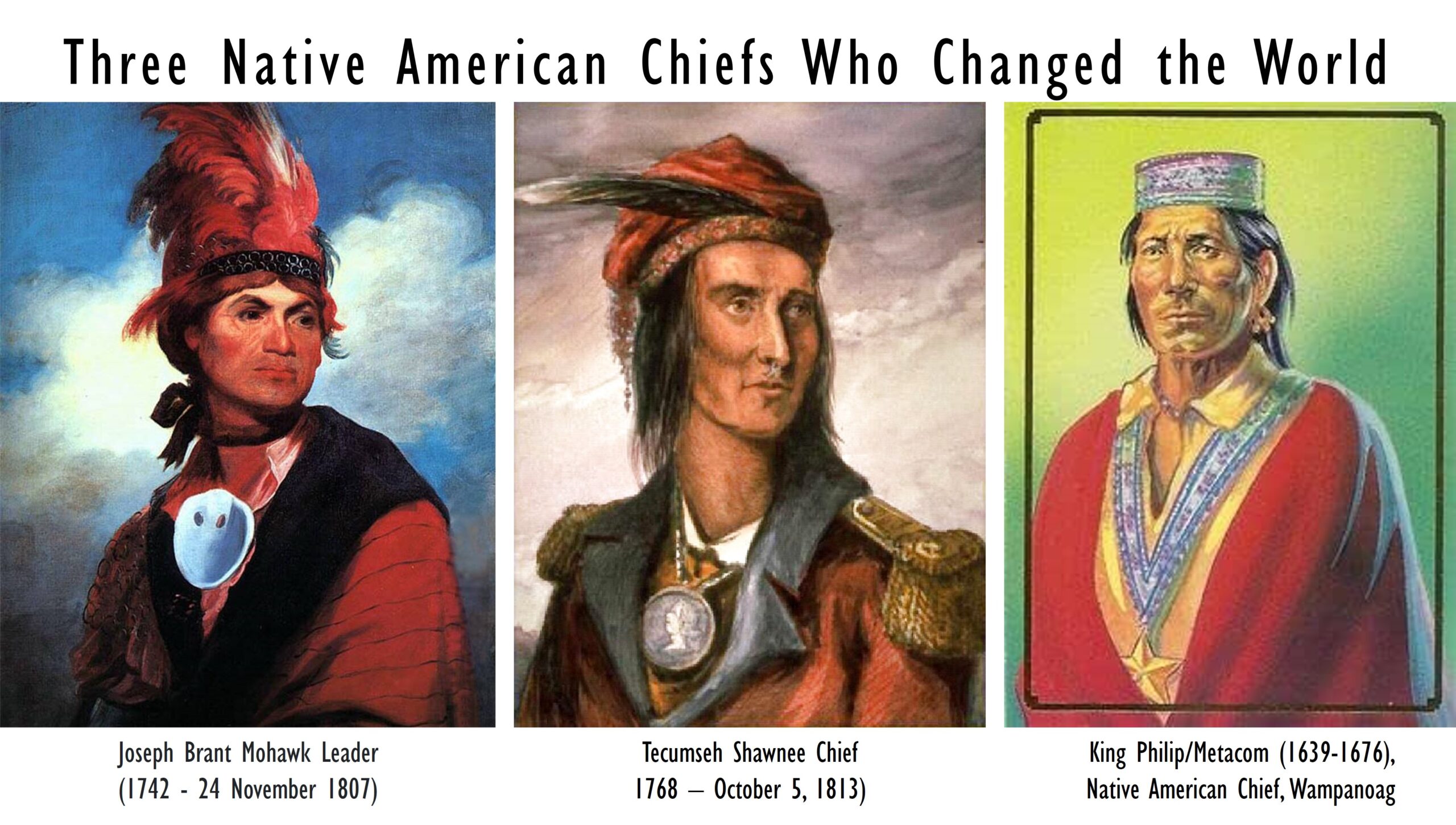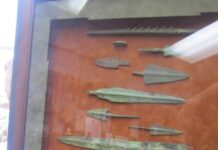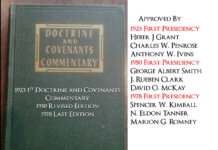Wonderful Lamanites have possessed this promised land and continue to do so, as it says in the Book of Mormon. We know the righteousness of the ancient Lamanite has allowed their people to remain on this Land of Promise even the Land of Joseph, or as it is called the United States of America. What have we learned from these Native Americans? How can we emulate them?
We have heard, “But before the great day of the Lord shall come, Jacob shall flourish in the wilderness, and the Lamanites shall blossom as the rose.” D&C 49:24.
As you read about these wonderful brothers and sisters, the Native Americans below, there has been a time in the not so distant past that they HAVE blossomed as a rose. Do you realize with the faith and dedication of these Native Americans who joined the early Church, they have passed on with their righteousness and shared the Gospel with many in the next life. As Peter said, “By which also he went and preached unto the spirits in prison” 1 Peter 3:19 What is not to say, there are millions of choice Lamanites just waiting for the day they can come down and join others in this world, to build the House of the Lord in the New Jerusalem?
I mention 85 of these honorable and brave Chiefs, that had been waiting for their temple work to be done for over 150 years, but thanks to many people, including, Robert Goodwin, Rod Meldrum, Delores Kahkonen, Wes and Ellen Clarke, Mike and Betty LaFontaine, and Michael Bedard, that work has been completed for these 85 special Chiefs.
Robert Goodwin’s Miracle
I will share the very beginning of a story that happened beginning in 2010 by the inspiration of a man named Robert Goodwin. The journey to find these 85 Chief’s records was because of the dedication Mr. Goodwin has in doing work for his ancestors.
Mr. Goodwin said, “Several years ago sometime in the first decade after the year 2000 I embarked on an unassuming endeavor that I didn’t recognize at the time would have an impact on promises made in Holy writ. The Book of Mormon front page states that it was written ‘to the Lamanites’ and further down the page are these words, ‘Which is to show unto the remnant of the House of Israel what great things the Lord hath done for their fathers; and that they may know the covenants of the Lord, that they are not cast off forever’.
Mr. Goodwin calls it an unassuming endeavor, but I would say it was much more than that. I will share his complete story in his own words, in a few days under the title, “MY LAMANITE STORY by Robert A. Goodwin.”
Jacob, Brother of Nephi, Loved the Lamanites
“O all ye that are pure in heart, lift up your heads and receive the pleasing word of God, and feast upon his love; for ye may, if your minds are firm, forever.
But, wo, wo, unto you that are not pure in heart, that are filthy this day before God; for except ye repent the land is cursed for your sakes; and the Lamanites, which are not filthy like unto you, nevertheless they are cursed with a sore cursing, shall scourge you even unto destruction.
And the time speedily cometh, that except ye repent they shall possess the land of your inheritance, and the Lord God will lead away the righteous out from among you.” Jacob 3:2-4
Michael Bedard

Most Latter-day Saints remeber this amazing event described below. Many of us also know the professional artist, Michael Bedard is the man who created the masterpiece called, “A Miraculous Request to President Wilford Woodruff.”
In 1877, the Founding Fathers of the United States and other eminent men and women appeared in a vision to Wilford Woodruff, president of the St. George Temple, for the purpose of completing their temple work. President Woodruff, assisted by others, immediately went forth and had the ordinances performed for these men and women. A listing of those who appeared can be found at this link.

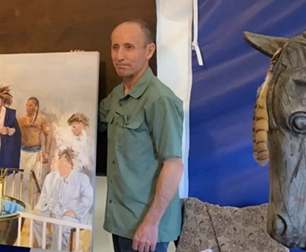
“A Remnant of the House of Israel –
85 Native American Chiefs.”
New! Michael Bedard Painting, to be Unveiled
Michael Bedard has just completed his new, 25-foot wide, work of art called, “A Remnant of the House of Israel – 85 Native American Chiefs.” It has been a 5 year project and he is ready to share the painting with the world.

You can be one of the first to see the unveiling of Michael Bedard’s newest art, at our Book of Mormon Conference on April 6th, at 6 pm, at the Mountain America Expo Center 9575 S. State St, Sandy, Utah Hall 4. Don’t Miss It!
85 Indian Chiefs Baptized Aug 29, 1877 at the St. George Temple
85 Indian Chiefs baptized Aug 29, 1877 at the St. George Temple, one week after the Founding Fathers. Read the Annotated Book of Mormon by David Hocking and Rod Meldrum page 554. Detailed story at my blog here:https://www.bofm.blog/85-native-american-chiefs-baptized-at-the-st-george-temple/


Three Native American Chiefs Who Changed the World
Captain Joseph Brant – Merciful War Chief
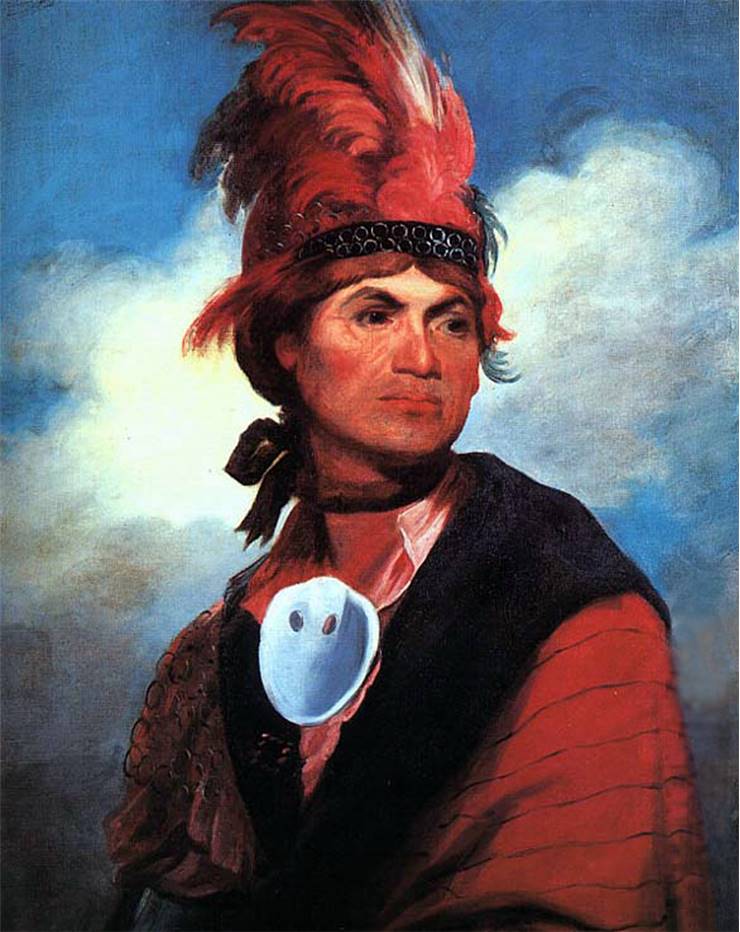 As a member of the Mohawk nation, Joseph Brant’s early life is connected to Sir William Johnson who was one of the most powerful men alive during the American Revolution. Sir William had not only married Captain Brant’s sister but also received hundreds of thousands of acres of land in exchange for his kindness towards the Mohawk Indians. Captain Brant’s trust in Sir William’s recommendation to support the English in the war led to his being known as a powerful enemy of the revolution, but despite Captain Brant’s reputation of terror, he was one of the most merciful enemies the revolutionaries could have ever hoped for. He spared and even saved the lives of many American captains, families, and individuals. During one particular raid, Captain Brant saw a victim give a Masonic signal and exclaimed, “Brother! you shall not die. I am a Mason and will protect you.” After the war, Captain Brant went on to translate the Gospel of John into the Mohawk language and build the first church in Upper Canada. He was a Native American Chief who loved not only his own life but also the lives of his neighbors.
As a member of the Mohawk nation, Joseph Brant’s early life is connected to Sir William Johnson who was one of the most powerful men alive during the American Revolution. Sir William had not only married Captain Brant’s sister but also received hundreds of thousands of acres of land in exchange for his kindness towards the Mohawk Indians. Captain Brant’s trust in Sir William’s recommendation to support the English in the war led to his being known as a powerful enemy of the revolution, but despite Captain Brant’s reputation of terror, he was one of the most merciful enemies the revolutionaries could have ever hoped for. He spared and even saved the lives of many American captains, families, and individuals. During one particular raid, Captain Brant saw a victim give a Masonic signal and exclaimed, “Brother! you shall not die. I am a Mason and will protect you.” After the war, Captain Brant went on to translate the Gospel of John into the Mohawk language and build the first church in Upper Canada. He was a Native American Chief who loved not only his own life but also the lives of his neighbors.King Philip – Protector of the Wampanoags
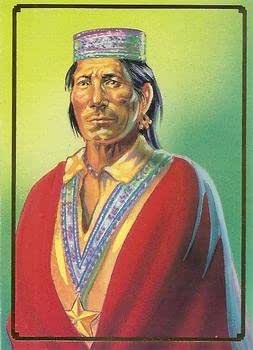 Seventeen years after the first Thanksgiving celebration with the Puritans, Chief Massasoit brought his two little boys to the governor of Plymouth and requested that they be given English names. The older was named Alexander and the younger, Philip after the ancient king who conquered Illyria, Thrace, and Greece. Ironically, Massasoit’s young Philip would one day attempt to conquer the very people who gave him his fierce name. As a loyalist, King Philip wanted more than anything to sustain the peace that his father had made with the early pilgrims, but the time soon came when the Puritans were more of a threat than an ally to his people. The English were seizing Indian weapons without just cause, taking land for practically nothing, and selling liquor that caused many a hardship on unsuspecting partakers. Any attempt to bring a dishonest white man to justice ended in a court that favored its own Puritan people. King Philip saw that his nation would perish if he did not make a stand against the settlers. His war lead to the destruction of 13 towns and the death of 600 men on the side of the English, but the entirety of the resisting Wampanoag nation was either killed, sold into slavery, or driven to the far West. King Philip himself was beheaded and cut into pieces while his wife and son were sold into slavery. He was a man who loved his nation more than life itself and died trying to protect his Wampanoag family.
Seventeen years after the first Thanksgiving celebration with the Puritans, Chief Massasoit brought his two little boys to the governor of Plymouth and requested that they be given English names. The older was named Alexander and the younger, Philip after the ancient king who conquered Illyria, Thrace, and Greece. Ironically, Massasoit’s young Philip would one day attempt to conquer the very people who gave him his fierce name. As a loyalist, King Philip wanted more than anything to sustain the peace that his father had made with the early pilgrims, but the time soon came when the Puritans were more of a threat than an ally to his people. The English were seizing Indian weapons without just cause, taking land for practically nothing, and selling liquor that caused many a hardship on unsuspecting partakers. Any attempt to bring a dishonest white man to justice ended in a court that favored its own Puritan people. King Philip saw that his nation would perish if he did not make a stand against the settlers. His war lead to the destruction of 13 towns and the death of 600 men on the side of the English, but the entirety of the resisting Wampanoag nation was either killed, sold into slavery, or driven to the far West. King Philip himself was beheaded and cut into pieces while his wife and son were sold into slavery. He was a man who loved his nation more than life itself and died trying to protect his Wampanoag family.Chief Tecumseh – The Noblest of Men
 One day in Tecumseh’s mid-twenties, a few fellow Shawnee Indians challenged him to a hunting competition. Each competitor would have three days to kill as many deer as he could. Tecumseh responded, “I will return here within the period with twice as many deer as any of you.” The hunters returned at the end of the third day having killed 12 and 13 deer, but Tecumseh soon walked into the light of the evening campfire carrying 30 deerskins. The noble Shawnee was an ambitious young man and a friend to anyone he encountered including white settlers. Tecumseh’s life soon took a new path when his brother was directed by the Great Spirit to form a confederation and lead the remaining Native American tribes against the invading American settlers. Four years later, Tecumseh had united at least six tribes and recruited 1,600 warriors to aid the cause. He initially tried to keep peace by negotiating the return of 60 acres of Native American land along the Wabash river, but after General Harrison denied the request, the negotiation ended with Tecumseh’s promise that his forces would neither capture women or children nor torture any men taken as prisoners of war. The new confederation saw some success, but most of its warriors were killed in an attack by General Harrison while Tecumseh was visiting another tribe. The two war leaders soon met again in the war of 1812. Tecumseh was now a Brigadier General for Great Britain and had a reputation for saving prisoners from harsh treatment and scorning even English generals for unjust conduct. Tecumseh was courageous and noble to the very end when he was shot just after asking that his sword be given to his son who he loved so dearly.
One day in Tecumseh’s mid-twenties, a few fellow Shawnee Indians challenged him to a hunting competition. Each competitor would have three days to kill as many deer as he could. Tecumseh responded, “I will return here within the period with twice as many deer as any of you.” The hunters returned at the end of the third day having killed 12 and 13 deer, but Tecumseh soon walked into the light of the evening campfire carrying 30 deerskins. The noble Shawnee was an ambitious young man and a friend to anyone he encountered including white settlers. Tecumseh’s life soon took a new path when his brother was directed by the Great Spirit to form a confederation and lead the remaining Native American tribes against the invading American settlers. Four years later, Tecumseh had united at least six tribes and recruited 1,600 warriors to aid the cause. He initially tried to keep peace by negotiating the return of 60 acres of Native American land along the Wabash river, but after General Harrison denied the request, the negotiation ended with Tecumseh’s promise that his forces would neither capture women or children nor torture any men taken as prisoners of war. The new confederation saw some success, but most of its warriors were killed in an attack by General Harrison while Tecumseh was visiting another tribe. The two war leaders soon met again in the war of 1812. Tecumseh was now a Brigadier General for Great Britain and had a reputation for saving prisoners from harsh treatment and scorning even English generals for unjust conduct. Tecumseh was courageous and noble to the very end when he was shot just after asking that his sword be given to his son who he loved so dearly.“Show respect to all people, but grovel to none. When you rise in the morning, give thanks for the light, for your life, for your strength. Give thanks for your food and for the joy of living. If you see no reason to give thanks, the fault lies in yourself.” – Tecumseh
Fulfilling of the Lord’s Promise to His Covenant People
The Lord has promised that someday the Native Americans shall “know that they are of the house of Israel, and that they are the covenant people of the Lord; and then shall they know and come to the knowledge of their forefathers, and also to the knowledge of the gospel of their Redeemer… And then at that day will they not rejoice and give praise unto their everlasting God, their rock and their salvation?” (1 Nephi 15:14-15) To create a visual aid that will help teach today’s Native Americans of the great chiefs who they are as members of the house of Israel, Michael Bedard is painting A Remnant of the House of Israel – 85 Native American Chiefs. The beautiful piece will depict 85 Six Nations Chiefs observing their baptismal temple work being done in the Saint George Temple.” Michael Bedard’s Website Here:
Sources
“Eulogy on King Philip Quotes by William Apess.” Goodreads, www.goodreads.com/work/quotes/344168-eulogy-on-king-philip. Accessed 24 Aug. 2017.
Johnston, Charles H. L. Famous Indian chiefs; their battles, treaties, sieges, and struggles with the whites for the possession of America. Boston, Page Co. Publishers, 1914.
Accessed 24 Aug. 2017.

